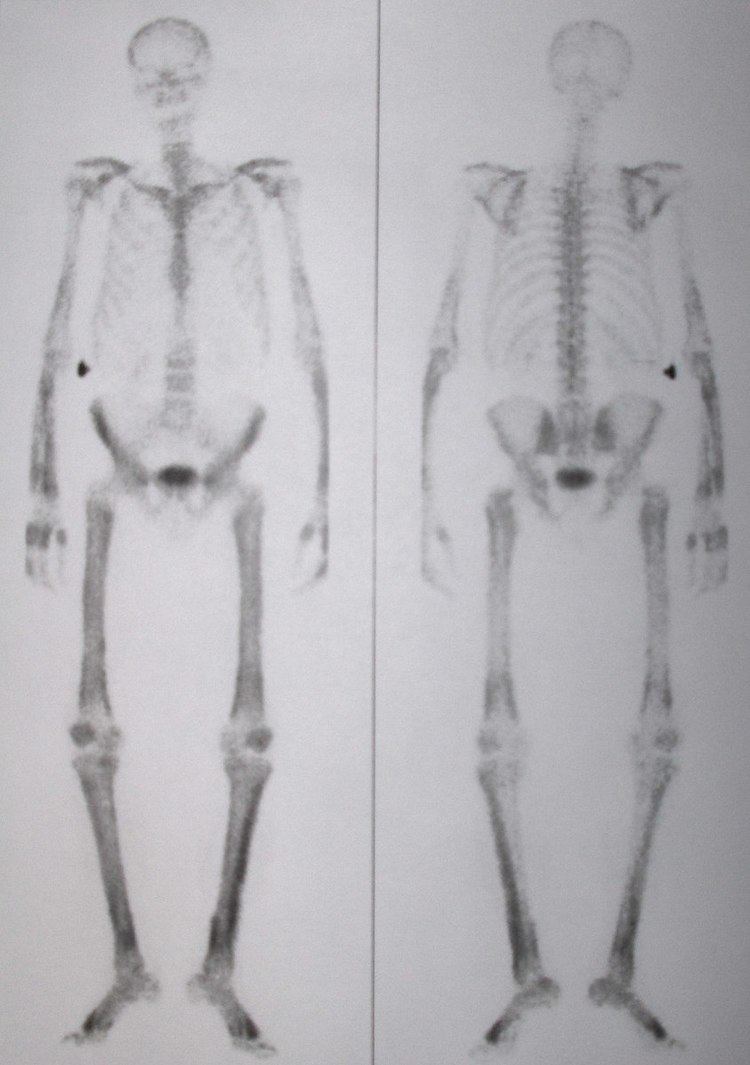Specialty rheumatology ICD-9-CM 731.2 | ICD-10 M89.4 DiseasesDB 6388 | |
 | ||
Hypertrophic osteoarthropathy (also known as hypertrophic pulmonary osteoarthropathy, Bamberger–Marie syndrome or Osteoarthropathia hypertrophicans) is a medical condition combining clubbing and periostitis of the small hand joints, especially the distal interphalangeal joints. Distal expansion of the long bones as well as painful, swollen joints and synovial villous proliferation are often seen. The condition may occur alone (primary), or it may be secondary to diseases like lung cancer. It is especially associated with non-small cell lung carcinoma. These patients often get clubbing and increased bone deposition on long bones. Their presenting symptoms are sometimes only clubbing and painful ankles.
Hypertrophic osteoarthropathy is one of many distant effect disorders due to cancer, with lung cancer being the most common cause but also occurring with ovarian or adrenal malignancies. A distant effect disorder, or a paraneoplastic syndrome, affects distant areas and thus is not related to local compression or obstruction effects from the tumor. Other paraneoplastic syndromes include hypercalcemia, SIADH, Cushing's syndrome and a variety of neurological disorders.
Eponym
It is named for Eugen von Bamberger and Pierre Marie.
